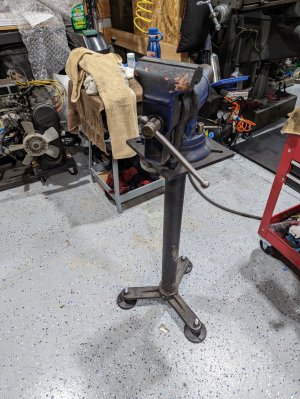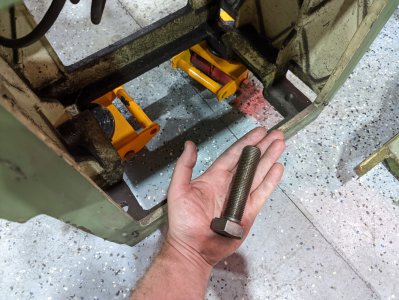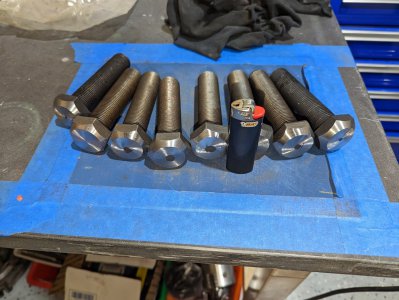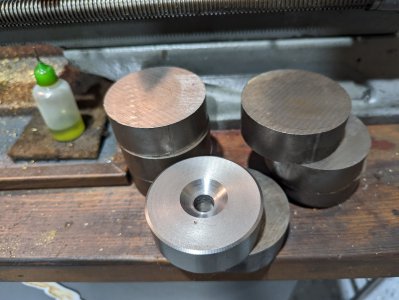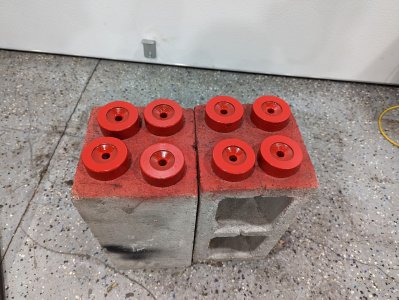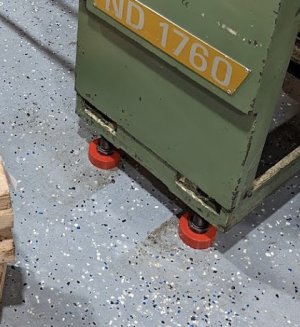- Joined
- Dec 28, 2022
- Messages
- 276
I opted not to do those due to size constraints and small bolt diameter.I have foot master casters on my air compressor they are grate but expensive get the ones with extending ratchet handles! I made a prototype foot for my lathe today that I think will work well for me. I used 3 inch round bar stock 4 inch long drilled and tapped one end for a 1/4 bolt this end will have a hockey puck bolted to it. The other end I drilled a 1/2 hole to for studs to drop into will use washers and nut for leveling adjustment.
I need to find some round stock that will be strong enough to hold the weight without deformation and I also need to find a way to take measurements to find “Level” on my floor. It is FAR from it, with leans and dips right where I have my lathe. Plus the whole section is leaning away from the headstock.


